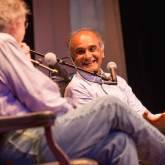Part Time to Full Time And Where to Start
Welcome to Part 2 of my 5 part series, “How To Succeed in Freelance Writing Without Really Trying,” citing Peter Bowerman’s¬†The Well-Fed Writer as a touchstone text.¬†Today, we’ll discuss how to get started and the transition from part time to full time. Access the rest of the series here: Part 1, Part 3, Part 4, Part 5.¬†
In The Well-Fed Writer,¬†Peter Bowerman offers a number of ways to break into the business of writing with zero contacts, zero experience, zero writing background, and zero portfolio. One of the ways to do this is to start crafting your career part time while you’re still gainfully employed, and to look for writing opportunities within the industry you’re already in.
So where was I? At the time, I was working for the largest and fastest-growing water sports company in Key West. We had just launched a brand new, beautifully designed website with e-commerce and we were working with an advertising agency in South Miami. One of the buttons on the website said “Key West Blog.” When you clicked on the link, it said “Coming Soon.” I saw an opportunity immediately and approached our operations manager to suggest that I write the blog. Right then and there, he called the owner and the idea was green lighted on the spot. I crafted a more detailed pitch and proposal, met with our owner and the creative director of the ad agency, and the blog was born.
This was the foundation of what would become a full blown content marketing and social media campaign at a time when businesses were just getting on board with this approach. I came up with the idea to brand the blog The Fury Girl Blog (there’s a picture of me on the site in a red bikini, snorkel mask, and fins to prove it!), and I’ve managed a social campaign that, five years later, has over 18,000 Facebook fans and over 2,000 Twitter followers. What’s great about working with a small company keen on growth is that there’s always new opportunities, and being apart of this team has been extremely gratifying–and lucrative.
But that’s just one piece of the puzzle. I began looking for freelancing opportunities elsewhere. My previous career as a New York City school teacher gave me an additional area of expertise in education. I realized that my first freelance assingment had actually come years earlier with copyediting and writing curriculum for the childcare franchising company that my dad works for. It’s a fruitful relationship I’ve continued to sustain over the years. Bowerman advises to reach out to your contacts, and when you’re starting out that might just be family and friends. My first paid travel column was for the website of my second cousin’s relocation guides company. The column was short-lived, but it was an opportunity to build my portfolio and flex my creative muscle–and, I quickly learned that every opportunity leads to the next opportunity.
Bowerman notes that the clients you have when you start your career will likely not be the same ones on your roster years down the road. He warns that you should never lean too heavily on one client for the majority of your income because if things change and you lose them, it can prove to be a huge financial hardship. Having a diverse portfolio is essential. In my business, I have a number of long term clients that have been my bedrock for years. I’ve also noticed that when one client goes, there’s usually another materializing in my pipeline to replace it. It can feel serendipitous, but there’s definitely more to it, (marketing, networking, cultivating relationships) and we’ll get into that later.
I worked in this part time freelance capacity for almost three years while working full time on the parasail boats in Key West, and completing my novel. I found gigs on Media Bistro‘s freelance job listings, with local publications, and through referrals. And occasionally, I’d even get approached with an opportunity. That still remains an amazing feeling as a freelancer.
I had a checklist and a timeline in mind for when I’d be ready to make the transition to full time:
- My novel would be complete and submitted to an initial round of agents.
- I’d have a certain amount of money in the bank.
- I’d have a city and a departure date in mind to launch my new career.
As much as I loved Key West and it had nurtured my early creative ambitions, for both professional and personal reasons, it was time to get off the rock, back to a city, and into a bigger market. I chose Miami.
Check back tomorrow for “Part 3: Cold Calling & The Law of Averages” of my 5 part series,¬†“How To Succeed in Freelance Writing Without Really Trying.”
¬†Are you interested in becoming a full-time writer? What questions do you have? Are you a fellow freelance writer? How did you get started?¬†Let’s start a dialogue in the comments below!






